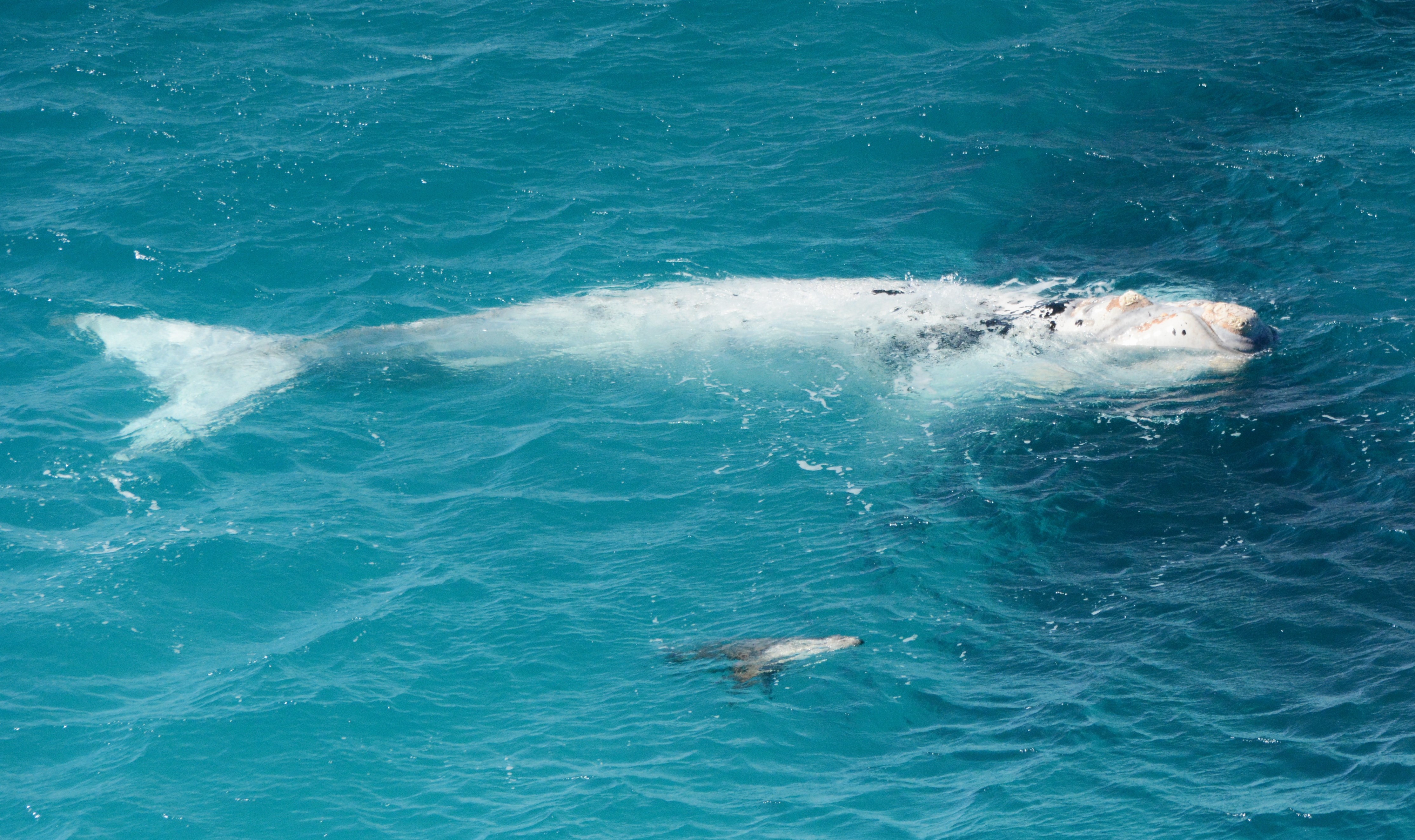Media release
From:
In the face of a devastating harmful algal bloom, scientists have hailed this year’s whale season in South Australia as a beacon of light for marine ecology and conservation.
The latest research led by Flinders University and other experts highlights the importance of the 30 years of marine park protection in the Great Australian Bight and other measures, raising prospects for the long-term recovery of endangered Southern Right Whales (Eubalaena australis) in southern Australian waters.
“With early sightings already reported at Head of Bight, Fowlers Bay and Encounter Bay, we are eagerly anticipating a bumper year after recent years of slower growth,” says Flinders University researcher Dr Claire Charlton, Chief Scientist of the Australian Right Whale Research Program.
“This week we recorded almost 200 whales across South Australia, with 70 females and calves at Head of Bight, nine females and calves at Fowlers Bay and four females with calves at Encounter Bay. These are record numbers observed since 2016,” says Dr Charlton, coauthor of two new scientific journal articles.
In partnership with the Minderoo Foundation, Yalata Anangu Aboriginal Community, the Department for Environment and Water, Eyre Peninsula Cruises, Flinders University and Curtin University, this year marks 35 years of annual southern right whale research in the Great Australian Bight.
“This research aims to assess distribution, abundance, life histories, health and behaviour to help inform management and policy and national recovery goals,” says Dr Charlton.
Southern right whales occupy the southern coasts of Australia between May and October during critical life stages for calving, nursing, mating and migrating.
“We celebrate the increasing numbers and site occupancy of whales at the historically important area of Fowlers Bay, and the conservation success of the Great Australian Bight Marine Park in protecting whales at Head of Bight,” says Flinders PhD candidate Bridgette O’Shannessy, the lead author of a new article in Marine Mammal Science, which focuses on 30 years of count data (1992-2022).
“However, the findings also serve as a caution as the overall population growth rate has slowed, and calving success has declined over the past decade,” adds Dr Charlton.
“This year marks a significant milestone: Thirty years since the establishment of the Great Australian Bight Marine Park in 1995, a sanctuary created largely due to groundbreaking research identifying the Head of Bight as a critical nursery area for these endangered whales,” says Ms O’Shannessy.
“Often considered a flagship species for successful conservation management, we are starting to see some long-term reduction in reproductive success and growth.
“Our data show rapid recolonisation at Fowlers Bay – one of the fastest growth rates for southern right whales anywhere in the world. This demonstrates the power of marine protected areas, but also the need for ongoing threat mitigation for the Australian population,” she says.
Recent aerial survey data from 1976 to 2024 indicate that the population size currently ranges between 2,346 and 3,940 individuals (16% to 26% of pre-whaling levels), with declines in calf abundance since 2017 from a peak of 222 in 2016 to 200 in 2024.
The Australian Southern Right Whale Recovery Plan aims to minimise threats, protect and enhance habitat, monitor species recovery, generate new knowledge to guide recovery, and increase public awareness of conservation needs.
Associate Professor Luciana Möller, from the Molecular Ecology Lab and Cetacean Ecology, Behaviour and Evolution Lab at Flinders University, adds: “In recent decades, reproduction in both the eastern as well as our western populations in Australia appears to have levelled off, with aerial surveillance indicating a decline in calf abundance.
“Changes in available food sources seem to combine with coastal development and habitat disturbances, including vessel strike, noise disturbance and fishing equipment entanglement as major threats to recovery,” Associate Professor Möller says.
Key findings:
- The Great Australian Bight Marine Park has been instrumental in protecting the Head of Bight, the primary calving ground for southern right whales. Whales now regularly fill these waters during the season, and numbers are increasing rapidly at Fowlers Bay – an historic nursery area experiencing accelerated recolonisation.
- Population growth is dynamic but slowing: While Fowlers Bay shows some of the highest growth rates globally (about 15% per year), the overall population growth at Head of Bight has moderated (approx. 3.3% per year). Calving success has declined over the past decade, highlighting emerging conservation challenges.
- Changing residency and site fidelity: Whale movements and connectivity across the ‘Biologically Important Areas’ (BIAs) on Australia’s southern coasts has increased with whales now spending less time residing in traditional aggregation areas. The need to manage interactions across migratory and reproductive BIAs is essential for future recovery
- Importance of long-term scientific research: Understanding changes to the population dynamics along southern coasts over decades is essential for meeting national recovery plan targets and safeguarding the population recovery into the future.
The Australian Right Whale Research Program, led by Dr Charlton of Flinders University, is in its 35th year of annual data collection, with support from funding partner Minderoo Foundation and research partners.
Multimedia





 Australia; SA; WA
Australia; SA; WA



